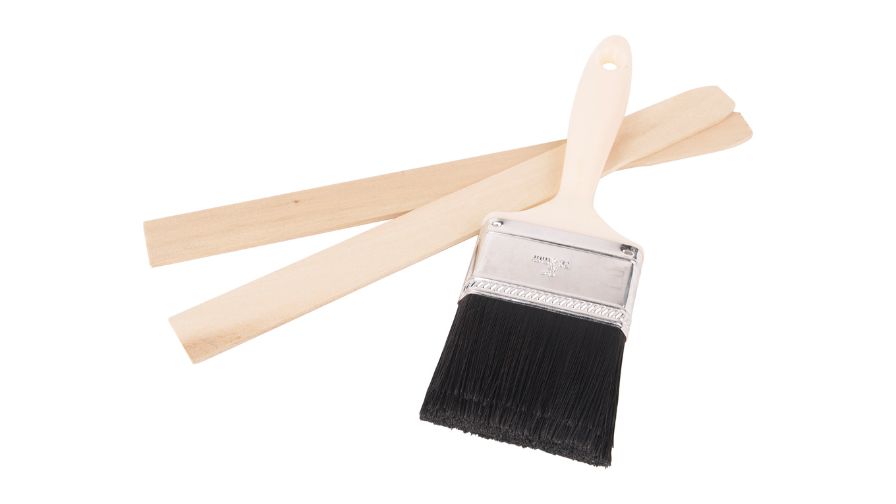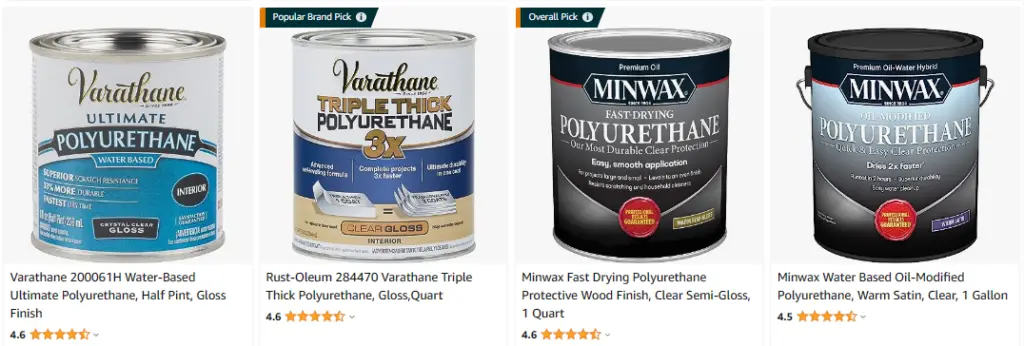
Do you ever wonder why you are supposed to stir polyurethane and not shake it? Many people make this mistake, but it can cause problems with the product. In this blog post, we will discuss the reasons why stirring is better than shaking when it comes to polyurethane. We will also give some tips on how to stir the product properly!

Click Here To Check The Pricing On Amazon
Why Do You Stir Instead Shake Polyurethane?
It’s best to stir instead of shaking your polyurethane can because it will introduce air bubbles into the mixture that will be difficult to get rid of later.
Stirring, on the other hand, will keep the mixture smooth and free of bubbles. It may take a little longer to mix, but it’s worth it in the end. So next time you’re ready to start your project, make sure you stir, not shake!
What Is Polyurethane And Why Do We Use It?
Polyurethane is a type of plastic that is commonly used in many different applications. It is strong and durable, making it ideal for use in many different settings. Polyurethane can be either rigid or flexible, depending on its intended use.
Many common things that are made of polyurethane include:
- Insulation: Polyurethane is also used in insulation. It is often used in spray foam insulation, as well as in other types of insulation. This is because it can help to keep homes and buildings warm in the winter and cool in the summer.
- Liquid coatings and paints: Polyurethane is also used in many different types of liquid coatings and paints. This is because it can help to create a smooth, consistent finish.
- Tough elastomers such as roller blade wheels: Polyurethane is also used in many tough elastomers. This includes things like roller-blade wheels. This is because it is very strong and durable, as well as able to resist wear and tear.
- Soft flexible foam toys: Polyurethane is also used in many soft flexible foam toys. This is because it is soft and safe for children to play with.
- Elastic fibers: Polyurethane is also used in some elastic fibers. This is because it is very strong and durable, as well as able to stretch.
Polyurethane is a versatile material that has many uses. It is strong and durable, making it ideal for use in many different settings. Polyurethane can be either rigid or flexible, depending on its intended use. It is also safe for children to play with and can help to create a smooth, consistent finish. Polyurethane is a popular choice for many different applications because of its many benefits.
The Difference Between Stirring And Shaking Polyurethane
When it comes to polyurethane, there is a big difference between stirring and shaking. Stirring allows for a more even distribution of the finish, while shaking can create bubbles that will be visible in the final product. Bubbles can also cause the polyurethane to cure unevenly, so it’s important to stir instead of shake when applying this finish.
The other reason to stir polyurethane is to keep the ingredients from separating. Over time, the solvents and resins in polyurethane can separate, which will make the finish less effective. Stirring helps to keep these ingredients mixed so that they can continue to do their job of protecting your surfaces.
So, next time you’re applying polyurethane, be sure to stir instead of shake. Your finish will thank you for it!
How To Stir Polyurethane Properly
Here’s how to stir polyurethane properly:
- Pour the polyurethane into a clean, dry container.
- Use a stir stick to mix the polyurethane gently but thoroughly.
- Be sure to scrape the sides and bottom of the container as you stir.
- Stir for at least two minutes, or until the ingredients are fully mixed.
Now that you know how to stir polyurethane properly, you can get started on your next project! Just be sure to read the instructions carefully and follow all safety precautions.
What Happens If You Don’t Stir Polyurethane?
If you don’t stir polyurethane, the solids will settle to the bottom of the can and you’ll be left with a runny, watery mess that won’t do a thing to protect your floors. stirring is essential to getting the most out of your polyurethane.
When you stir polyurethane, you’re not just mixing the liquids – you’re also aerating it. This is important because it allows the solids in the polyurethane to suspend evenly throughout the can, and it helps to prevent them from settling out.
Stirring also helps to break up any clumps that might have formed during storage, and it ensures that the polyurethane will have a smooth, even consistency when you apply it.
So next time you’re tempted to give your polyurethane a shake instead of a stir, remember what’s at stake – your floors! Take the extra few minutes to stir, and you’ll be glad you did.
What Happens If You Shake Minwax Polyurethane?
Shaking Minwax polyurethane creates bubbles that will ruin the smooth, even finish you’re trying to achieve. When you stir polyurethane, you mix in just the right amount of air to create a smooth, professional-looking finish. So take the time to stir – it’ll be worth it in the end!
Accidentally Shook Polyurethane
Have you ever accidentally shook a can of polyurethane? If so, you probably noticed how difficult it is to get the contents back into a liquid state. Once the bubbles have been introduced, they’re tough to get rid of. When you stir instead of shake polyurethane, you avoid introducing those pesky bubbles and end up with a much smoother finish.
So, next time you’re about to start a polyurethane project, make sure to give the can a good stir instead of a shake. Your finished product will thank you!



